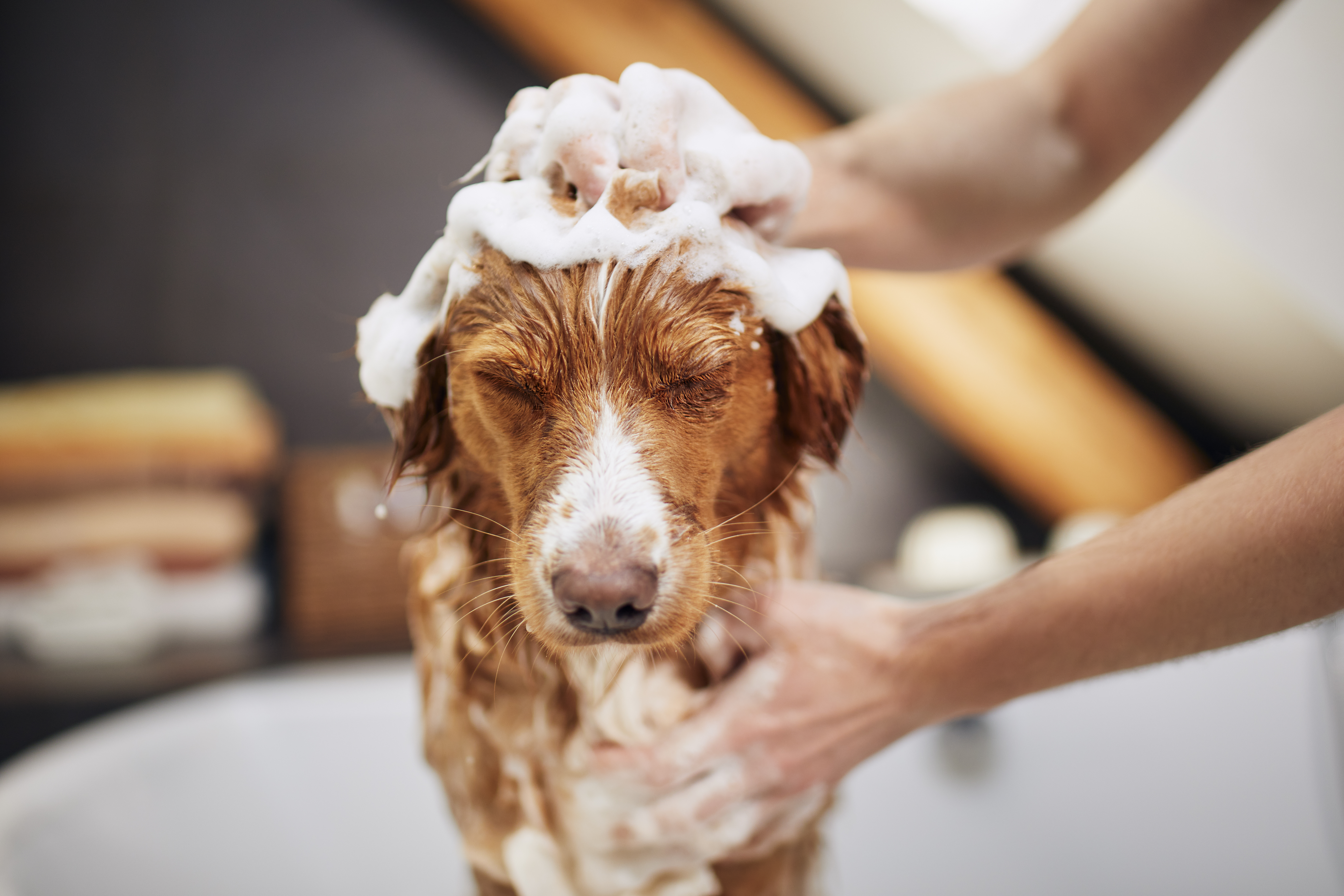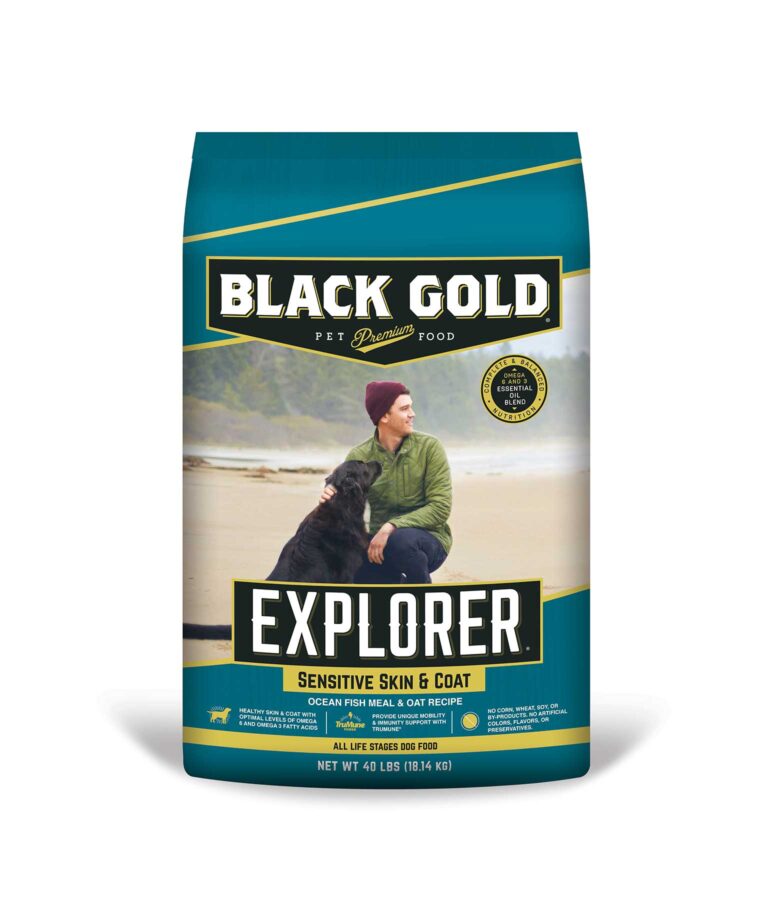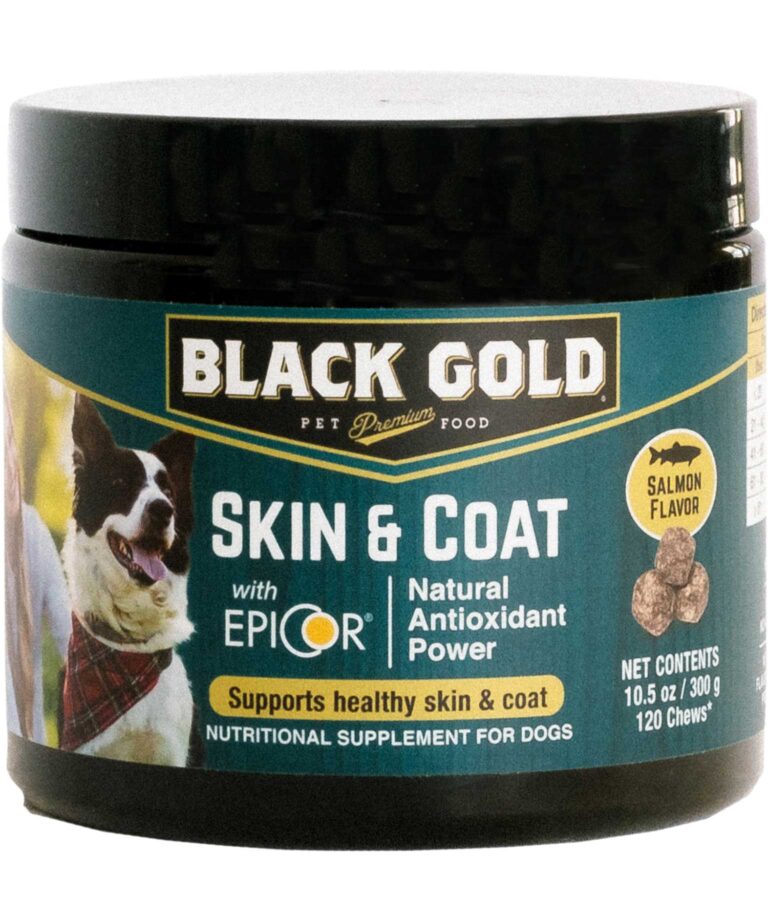Unleash the Glow: Keeping Your Dog’s Skin and Coat Healthy

Fostering your buddy’s well-being is a shared adventure, and giving their skin and coat extra TLC is yet another way to keep the journey a joy.
Your pup’s glossy coat is a visible sign of their health and vitality. In fact, vets use coat condition as part of a health assessment. When a dog’s coat is dull and their skin is dry or flaky, this can be a symptom of nutritional deficiencies, or thyroid and other diseases. Their skin is also a partner to the immune system, shielding them from infection and storing vitamins and minerals needed for important cell processes.
CARING FOR YOUR DOG’S COAT
Regular grooming sessions are a good time to check for skin lumps and bumps, and other areas of concern. Plus, you can remove all those burrs, grass seeds and other souvenirs from your adventures together! Try different brushes till you find one that’s right for your furry friend:
· Bristle – These differ by the spacing and length of bristles. Widely spaced and longer bristles are better for longer hair. Stiff bristles are helpful for coarse coats.
· Wire Pin – Wire pin bristles have a rubber tip at the end. They’re recommended for medium- to long-haired dogs, and breeds with wooly coats.
· Slicker – Usually a pad with fine wire bristles, slicker brushes are great for untangling knots and working out mats.
GENERAL GROOMING TIPS
· Regular grooming keeps your pup comfortable with being brushed and bathed.
· De-shed first before brushing. After brushing, then bathe.
· Comb and de-shed in sections, starting at the neck. Part the hair at the skin and work all the way from root to tip to remove buried dander.
· Brush from head toward tail, following hair growth. Use firm strokes; about a third of your dog’s back length is about right.
· After bathing, rinse well and pat fur, don’t rub, to avoid creating tangles.
Long-Haired Coats
If your pup rocks long locks, regular grooming is essential. Aim for a simple brush-through a few times a week. Use a wide-toothed comb to remove clumps and loose undercoat. Trim tangled and matted fur before it spreads and worsens. Long fur around footpads can cause your dog to slip, so trim there too. Regular baths with detangling products are a must.
Curly-haired companions may shed less, but the hair is easily trapped in their coat, forming knots. Just running a brush over the topcoat won’t work, so use a deshedder or slicker brush to remove knots, and then detangle fur with a wide-tooth comb. Pay special attention to ears, groin and under legs, and remove mats carefully with scissors angled away from the body.
Short Coats
Short-haired sidekicks are low-maintenance, but a good rubdown with a soft brush still does wonders. It’s like a massage for your pup – and who doesn’t love a massage? Aim to brush your buddy every two weeks, using a rubber brush or softer bristle brush to work out small knots and shine up the fur. A deshedder works well on dogs with thick undercoats, such as Labradors, who shed profusely if not brushed.
BATHING: HOW OFTEN?
Ewww! Your pooch rolled in something stinky, or came back from an adventure covered in leaves and mud. Bath time is all part of being a pet parent, but how often do you roll up your sleeves? Outdoorsy types might need a weekly bath. Couch potatoes might only need one every few months. Curly haired dogs should be bathed every four to six weeks, while oily-coated breeds like Basset Hounds or wrinkly breeds like Shar Peis need more frequent baths to keep their skin healthy.
CHOOSING A SHAMPOO
Fragrances and other chemicals in human bath products are too harsh for a dog’s skin, and even upset their digestion. Choose shampoos designed for dogs to give your buddy the safest possible bath time. A conditioner or crème rinse for long-haired or curly-haired dogs will help coats stay silky and prevent tangles. If your dog has dandruff or dermatitis, ask your vet to recommend a medicated shampoo.
SKIN AND FUR FOOD
Beyond grooming, hydration and good nutrition are the fuel for shining fur and resilient skin. Hydration is important for dogs because they do not have sweat glands. They rely on their skin to regulate their body’s moisture, and its lipid barrier to prevent excessive moisture loss and maintain a robust metabolism.
Lastly, ensure that easily digestible proteins, carbohydrates, fats, minerals, and vitamins are included in your dog’s diet. Poor quality or poorly absorbed nutrients cheat your pup of the energy it needs for adventure, and will overload their liver and kidney with indigestible waste. All of Black Gold’s formulas are free from fillers, and include a balance of high-quality proteins and fats for a lustrous coat and youthful skin. For companions with sensitive skin, our Sensitive Skin & Coat recipe, formulated with fish meal and oat, gives them the nutrition they need without allergenic ingredients.
Taking care of your best friend’s skin and coat may seem like a simple act of love, but it’s one that adds so much to the fun and frolic you share. Revel in the fact that you’re helping your pup look good, feel good, and be at their best for all the adventures ahead.
Learn more about our special hypoallergenic formula to keep your dog’s skin and coat healthy : Black Gold Explorer Sensitive Skin & Coat recipe


